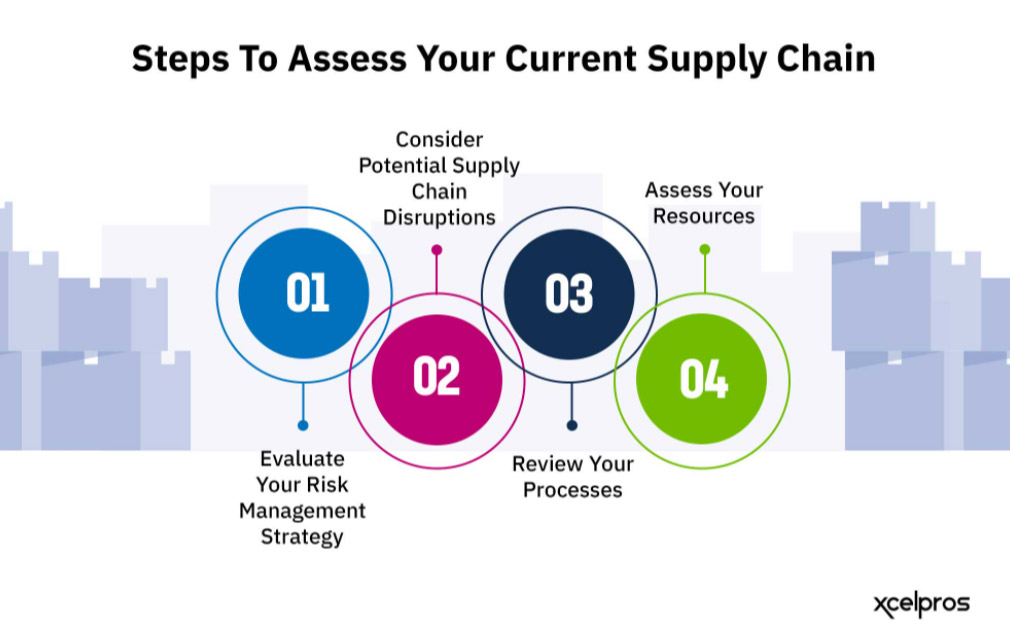Why Supply Chain Transformation Still Matters
Supply chains used to be about resilience—keeping things moving when the world didn’t. But survival is no longer the only goal.
Today, the supply chain is a highly tuned performance engine. It’s how businesses protect margins, deliver better experiences, and move faster than the market.
The shift is no longer from analog to digital supply chains. It’s from digital supply chains to intelligent.
From Digital Supply Chains to Intelligent Ecosystems
The early wave of supply chain transformation was all about technology adoption—IoT, automation, and machine learning. Necessary, but not enough.
Now, the goal is orchestration.
Smart companies aren’t just connecting systems; they’re building supply networks that are predictive, adaptive, and self-optimizing.
Not just to keep up—but to outperform.
Getting Better at Navigating Constant Disruption
Disruption isn’t occasional anymore—it’s constant. From shifting regulations to volatile demand, the environment is always in motion.
The best supply chains aren’t reactive. They anticipate and adapt.
That’s why leading organizations are shifting:
- From reaction → prediction
- From visibility → insight
- From systems of record → systems of intelligence
What Is an Intelligent Supply Chain and What Does It Do?
An intelligent supply chain is more than digital—it’s dynamic. It connects data, platforms, and partners into a system that learns and responds in real time.
Powered by AIoT (Artificial Intelligence of Things), it combines the predictive capabilities of AI with the real-time monitoring of IoT devices. This fusion drives AIoT supply chain resilience, enabling organizations to anticipate disruptions, adapt rapidly, and respond proactively across operations.
An intelligent supply chain improves forecasting accuracy, speeds up decision-making, and reduces risk across every layer of operations. It unifies planning, sourcing, and fulfillment into a single, transparent view. It automates bottlenecks and converts insights into action—before disruption turns into downtime.
Our Framework for Supply Chain Transformation — Without the Overhaul
Transformation doesn’t mean starting from scratch. At XcelPros, we’ve developed a practical framework to help organizations modernize with purpose—prioritizing high-impact improvements that work with what’s already in place.
Our approach is flexible and grounded in your business reality, but it follows a few consistent pillars:
-
Clarify the role of the supply chain
What should it enable—speed, efficiency, growth, resilience?
-
Map friction
Identify disconnects in data, systems, or workflows that create delays or blind spots.
-
Spot early opportunities
Look for automation or visibility improvements that deliver fast returns.
-
Sequence for scale
Build momentum with changes that strengthen capability without adding complexity.
-
Design for adaptability
Choose tools that grow with your business—not just serve today’s needs.
This framework helps you move forward with focus, not friction. It’s not just about “going digital”—it’s about building smarter operations that evolve with you.
What Tools Actually Power a Smart, Connected Supply Chain?
Smart supply chains aren’t built on stitched-together systems or reactive dashboards. They’re shaped by real-time coordination—where planning, procurement, inventory, and logistics all speak the same language.
We’ve seen firsthand how that shift happens. It’s not just about tech—it’s about having the right tools that make live visibility possible, bring predictability to demand, automate the routine, and bring the exceptions to the surface before they turn into delays.
Today’s supply chain platforms are evolving to meet that challenge. Capabilities like industrial ERP batch traceability aren’t just checkboxes—they give teams the visibility to trace issues to the source, respond faster, and maintain quality under pressure.
The goal isn’t just knowing what went wrong—it’s preventing it from happening again.
How Do You Know It’s Time to Upgrade Your Supply Chain?
Sometimes it’s obvious—missed deliveries, ballooning costs, disconnected teams. Other times, the friction builds quietly until it becomes business as usual.
If your team is still relying on spreadsheets, reacting to problems late, or struggling to scale operations, it’s time.
Modernization doesn’t mean tech for tech’s sake. It means moving from chaos to control—and turning your supply chain from a cost center into a competitive advantage.
Final Thoughts
An intelligent supply chain is no longer just an option—it’s become the backbone of scalable, high-performing operations. Businesses that continue to rely on reactive systems and disconnected tools will struggle to keep pace with the demands of modern markets.
Moving forward isn’t a complete overhaul. It’s about building capability where it matters most—enhancing visibility, responsiveness, and automation across the supply chain.
By leveraging AIoT supply chain resilience and tools like industrial ERP batch traceability, organizations gain more than efficiency. They gain control.
It’s time to stop managing supply chains the old way—and start enabling growth with an intelligent supply chain designed to anticipate, adapt, and outperform.



















